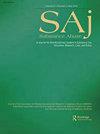Accuracy of Publicly-Listed Locator Information for Buprenorphine Waivered Practitioners and Opioid Treatment Programs in the Us, 2020
IF 2.4
3区 医学
Q2 SUBSTANCE ABUSE
引用次数: 0
Abstract
Background: Opioid use disorder affects millions of Americans, but only a fraction receive treatment. This may be due in part to inaccurate information available about buprenorphine waivered practitioners (waivered practitioners) and Opioid Treatment Programs (OTPs) on public, federally-sponsored locator databases. We aimed to assess the accuracy of publicly-listed locator information for waivered practitioners and OTPs across the US. Methods: Using a cross-sectional study design, we randomly sampled waivered practitioners (n = 253; 0.5%) and licensed OTPs (n = 165; 10%) that were publicly-listed on a federally-sponsored database. We used a three-pronged approach to assess the accuracy of the information available by concurrently administering a phone survey (making up to 3 attempts to contact), conducting online searches, and reviewing provider information on state board websites (practitioners only) between August and November 2020. We used descriptive analyses and inferential statitistics to analyze the data. Results: Among n = 418 waivered practitioners and OTPs sampled, many were located in the South and in an urban area. For the phone survey, researchers were able to reach OTPs nearly twice as often as waivered practitioners. Of those reached, n = 19 waivered practitioners and n = 40 OTPs agreed to participate, and we found most had up-to-date contact information. OTPs yielded significantly more online search results and matching contact information than waivered practitioners (p < 0.001). Most waivered practitioners were located on state licensing board websites, but few had contact information listed, and only one listed the practitioner's waiver status. Conclusions: Waivered practitioners and OTPs were difficult to reach via phone but easier to find online and on state licensing board websites; when they were reached via phone, their contact information was very accurate. Whether challenges locating a waivered practitioner or OTP is associated with lower treatment utilization should be evaluated.2020年美国停用丁丙诺啡的从业者和阿片类药物治疗项目公开列出的定位器信息的准确性
背景:阿片类药物使用障碍影响着数百万美国人,但只有一小部分人接受了治疗。这可能部分是由于联邦赞助的公共定位数据库中关于丁丙诺啡豁免从业者(豁免从业者)和阿片类药物治疗计划(OTP)的信息不准确。我们旨在评估美国各地放弃执业医师和OTP公开列出的定位器信息的准确性。方法:采用横断面研究设计,我们随机抽取放弃执业医师(n = 253;0.5%)和许可OTP(n = 165;10%)在联邦赞助的数据库中公开列出。我们采用三管齐下的方法来评估可用信息的准确性,方法是在2020年8月至11月期间同时进行电话调查(最多3次尝试联系)、在线搜索和审查州委员会网站上的提供商信息(仅限从业者)。我们使用描述性分析和推理统计学来分析数据。结果:n = 418名被遗弃的从业者和OTP被抽样,其中许多位于南部和城市地区。在电话调查中,研究人员接触OTP的频率几乎是放弃的从业者的两倍。在达到的数量中,n = 19名放弃的从业者和n = 40名检察官同意参与,我们发现大多数检察官都有最新的联系信息。OTP产生的在线搜索结果和匹配的联系信息明显多于放弃的从业者(p < 0.001)。大多数被豁免的从业者都在州许可证委员会的网站上,但很少有人列出联系信息,只有一人列出了从业者的豁免状态。结论:弃权的从业者和OTP很难通过电话联系到,但更容易在网上和州许可委员会网站上找到;当通过电话联系到他们时,他们的联系方式非常准确。应评估寻找放弃执业医师或OTP的挑战是否与较低的治疗利用率有关。
本文章由计算机程序翻译,如有差异,请以英文原文为准。
求助全文
约1分钟内获得全文
求助全文
来源期刊

Substance abuse
SUBSTANCE ABUSE-
CiteScore
5.90
自引率
2.90%
发文量
88
审稿时长
>12 weeks
期刊介绍:
Now in its 4th decade of publication, Substance Abuse journal is a peer-reviewed journal that serves as the official publication of Association for Medical Education and Research in Substance Abuse (AMERSA) in association with The International Society of Addiction Medicine (ISAM) and the International Coalition for Addiction Studies in Education (INCASE). Substance Abuse journal offers wide-ranging coverage for healthcare professionals, addiction specialists and others engaged in research, education, clinical care, and service delivery and evaluation. It features articles on a variety of topics, including:
Interdisciplinary addiction research, education, and treatment
Clinical trial, epidemiology, health services, and translation addiction research
Implementation science related to addiction
Innovations and subsequent outcomes in addiction education
Addiction policy and opinion
International addiction topics
Clinical care regarding addictions.
 求助内容:
求助内容: 应助结果提醒方式:
应助结果提醒方式:


